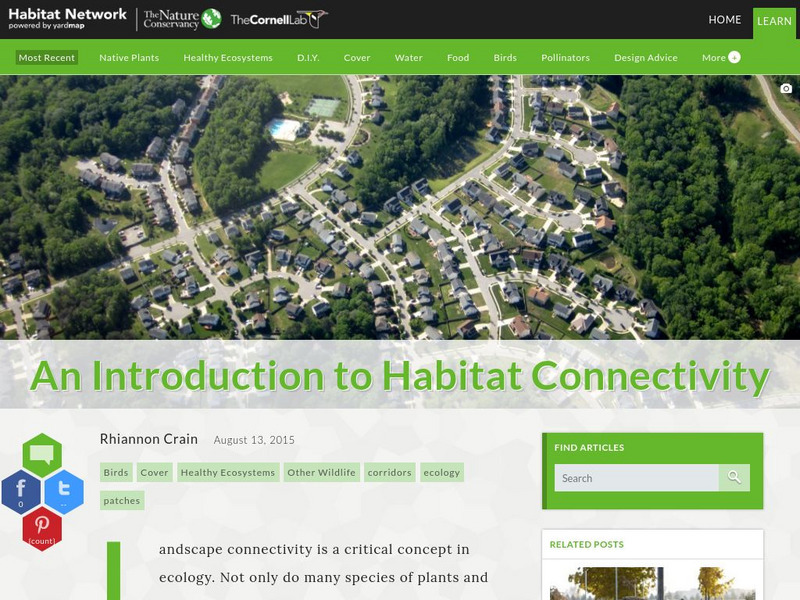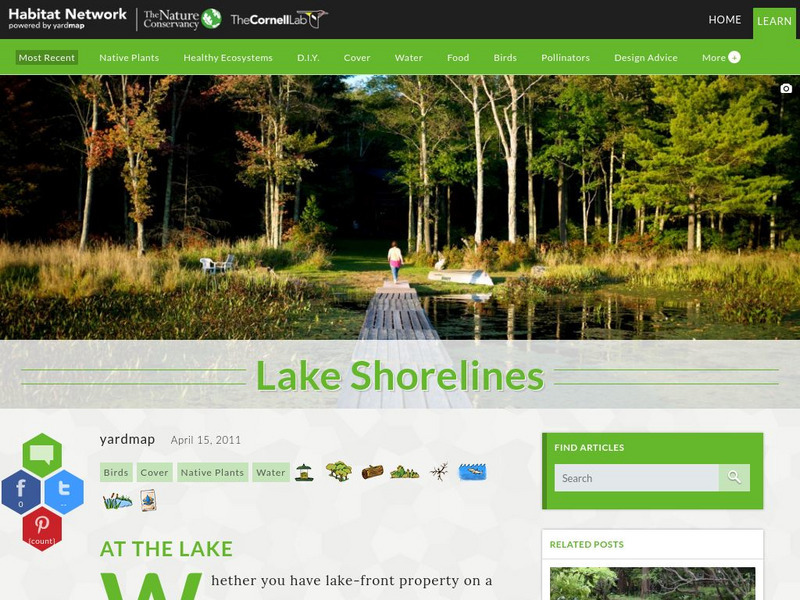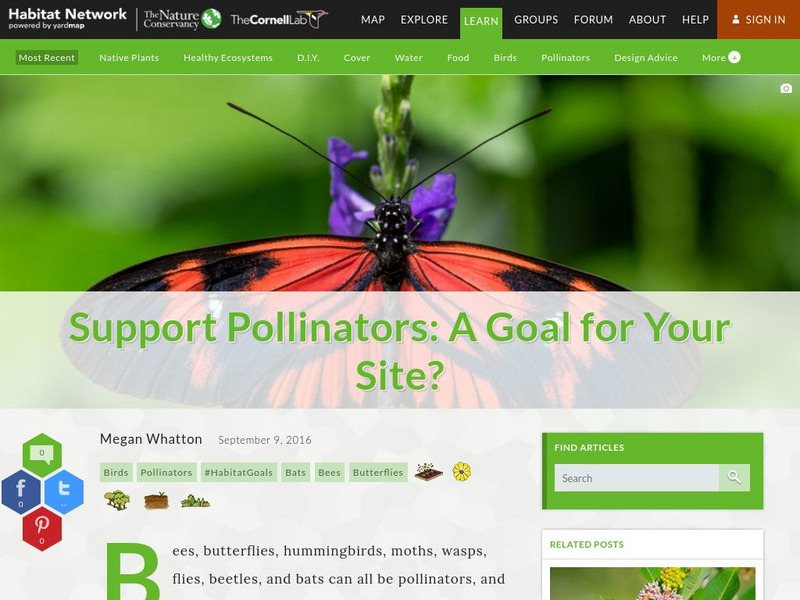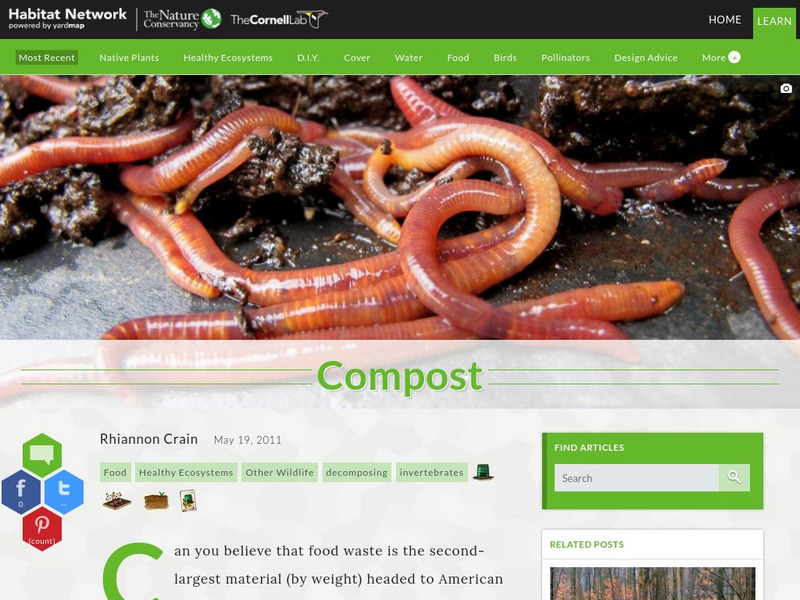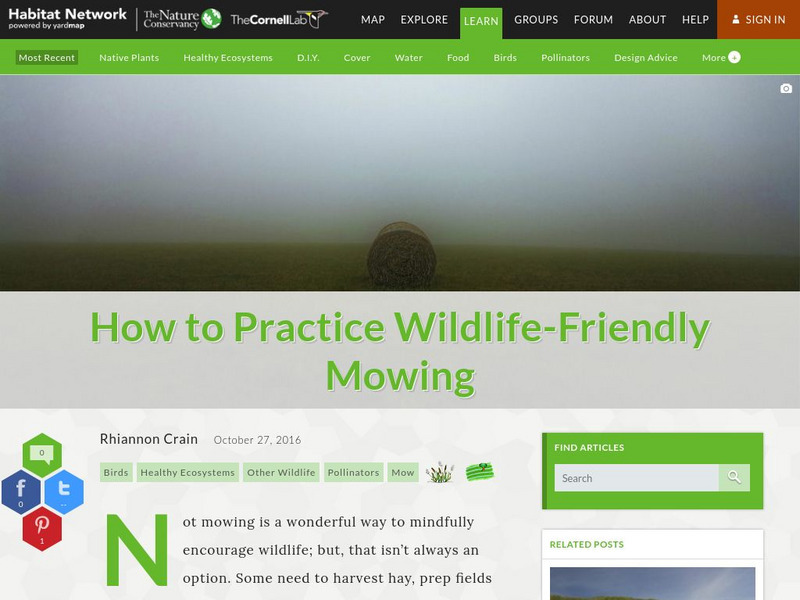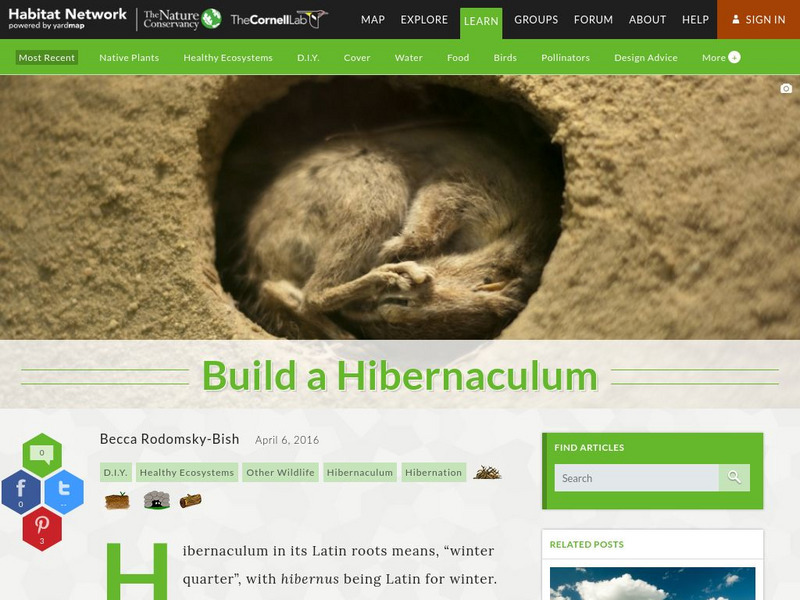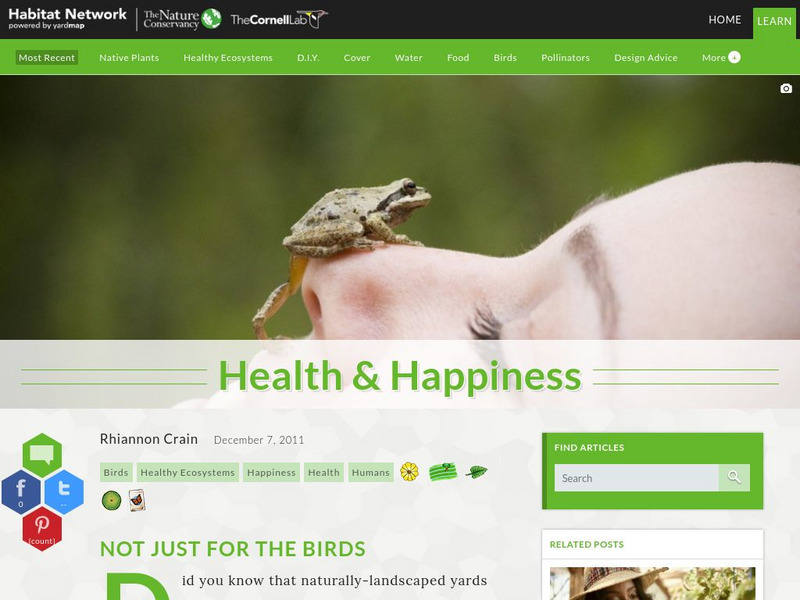Cornell Lab of Ornithology
Habitat Network: An Introduction to Habitat Connectivity
Find out about the idea that landscape connectivity is a critical concept in ecology.
Cornell Lab of Ornithology
Habitat Network: Habitat Feature: Bat Houses
Find out how providing bat houses can be beneficial to a habaitat.
Cornell Lab of Ornithology
Habitat Network: Habitat Feature: Sun Perches
See why many species use perches near their water source to take in the sun's warmth.
Science Buddies
Science Buddies: M&m Survival Challenge
In the wild, there are two types of animals: the hunters and the hunted. A good predator is always on the prowl for fresh prey. What can an animal do to stay off of the menu? Find out how some animals use camouflage, and why sometimes it...
Writing Fix
Writing Fix: A Habitat for a Wild "Pet"
After observing and naming elements of an animal's habitat, and reading The Salamander Room by Anne Mazer, students write fictional stories about finding and caring for a wild animal. A printable graphic organizer, a teacher example, and...
Cornell Lab of Ornithology
Habitat Network: Discouraging Mosquitoes and Providing Habitat for Wildlife
Find out about some wildlife friendly tips for reducing mosquitoes in yards.
Cornell Lab of Ornithology
Habitat Network: Habitat Feature: Logs
Evaluate the importance of a fallen tree in a forest ecosystem.
Cornell Lab of Ornithology
Habitat Network: Habitat Feature: Evergreens
Learn how evergreen plants, both trees and shrubs have important roles to play in landscaping- from aesthetic to ecological.
Cornell Lab of Ornithology
Habitat Network: Vernal Pools Connect Otherwise Isolated Habitats
See how the change in weather and precipitation creates vernal pools and a connection of isolated habitats.
Cornell Lab of Ornithology
Habitat Network: Pollinators at Home: Intro to Pollinator Gardening
Find out how to provide native plants that foster the activity of insects and other pollinators.
Cornell Lab of Ornithology
Habitat Network: Lake Shorelines
Become a citizen scientist, and find out how to turn a shoreline landscape into a bird haven.
Cornell Lab of Ornithology
Habitat Network: At a Park
See why public lands are absolutely essential for effective bird conservation.
Cornell Lab of Ornithology
Habitat Network: Support Pollinators: A Goal for Your Site?
Find out the three easy steps citizens can take to support pollinators including providing shelter and nesting materials, food, and avoiding using chemicals like pesticides and fertilizers.
Cornell Lab of Ornithology
Habitat Network: Understand Planting Tools: Plant Hardiness Zones vs. Ecoregions
Understand what plants to put in the ground that- barring predation or other unforeseen setbacks- will grow and thrive.
Cornell Lab of Ornithology
Habitat Network: Ozark Trials: Design Challenge
Design Challenge takes photos of tricky spots in people's yards, like this one in Arkansas, and puts them out there for advice from the professionals at the Cornell Lab of Ornithology.
Cornell Lab of Ornithology
Habitat Network: Compost
Are people wasting yard waste? Why not turn a small corner of a backyard into a nutrient source that not only replenishes the soil but supports the base of the bird food pyramid.
Cornell Lab of Ornithology
Habitat Network: Must We Mow? Increase Wildlife Value of Working Landscapes
Learn about the ecological benefits of allowing a landscape to grow naturally without mowing.
Cornell Lab of Ornithology
Habitat Network: How to Practice Wildlife Friendly Mowing
When it is time to mow, find out the simple strategies to consider to minimize negative impacts on wildlife.
Cornell Lab of Ornithology
Habitat Network: Be Healthier: A Goal for Your Site?
Learn about the many small steps people can take to improve one's health and the health of one's community.
Cornell Lab of Ornithology
Habitat Network: Install Edible Gardens
Find out the benefits of planting a garden that provides a sustainable source of food for people.
Cornell Lab of Ornithology
Habitat Network: Take Control of Herbicide Use on Your Property
Here's what you need to know to make an informed choice on the best strategy to tackle backyard weeds.
Cornell Lab of Ornithology
Habitat Network: Build a Hibernaculum
Learn about the hibernation habits of different species, and find out how to provide the conditions for a hibernaculum for some species in your backyard.
Cornell Lab of Ornithology
Habitat Network: Investigations Into How to Prevent Deadly Bird Window Strikes
Act a community advocate to help commercial properties embrace best practices for decreasing bird-strikes on their large, heavily-glassed buildings.
Cornell Lab of Ornithology
Habitat Network: Health & Happiness
Learn about the idea that personal well-being, as well as the well-being of the neighborhood, were positively related to the diversity of birds and density of plants.


